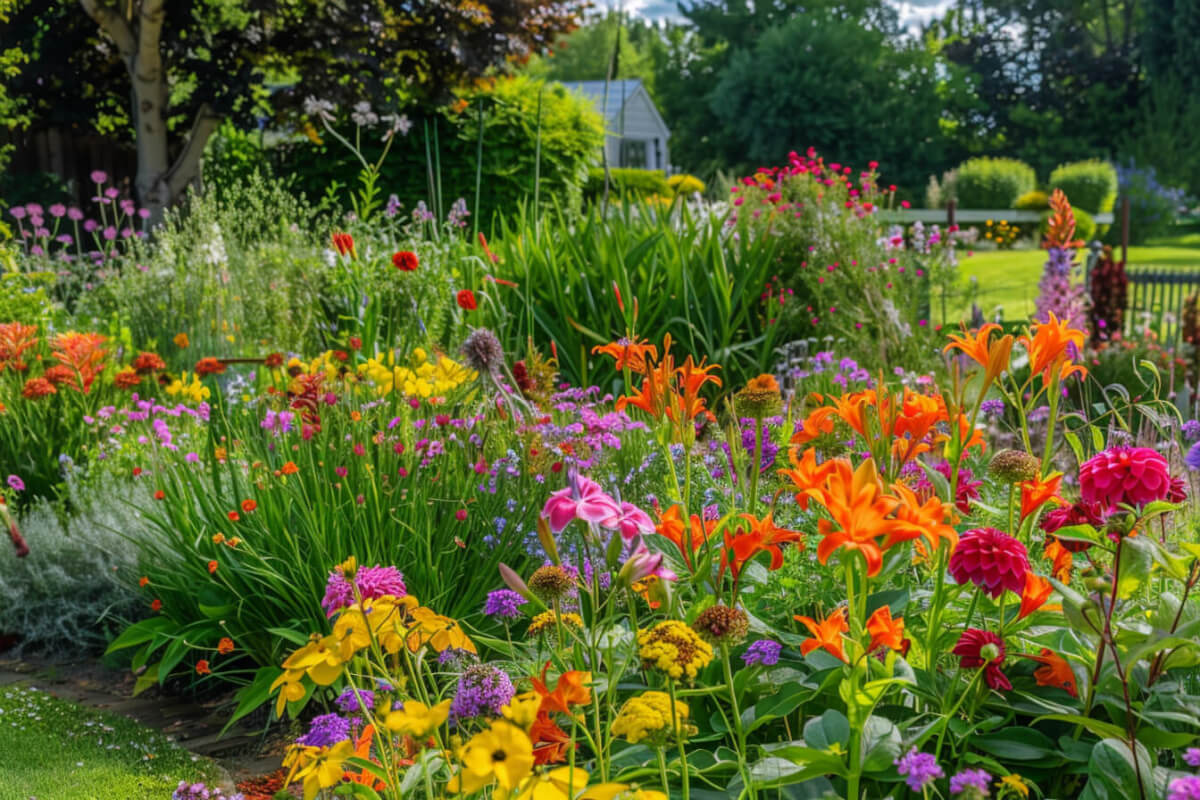
This sunshine is nice, right? Such a welcome relief from the constant deluge.
This morning I dedicated a good chunk of time to fertilizing everything. Things actually look pretty good, all things considered. I added a fresh layer of mulch just before the rains came, and that really kept things happy and healthy.
The delphiniums and snapdragons are still blooming well, but the foxgloves and poppies are toast and have been pulled to make room for the ‘Indian Summer’ rudbeckia, ‘Mystic Spires’ salvia, and Profusion
Here are some tips for easing your garden into summer
- Resist the temptation to water your gardens and yards until they really need it.
We’ve had SO much rain, and we need to take advantage of it. Let the rain do its work. The longer your garden and landscape goes between waterings, the deeper plant root systems will be.
Plants with deep root systems are more resilient during periods of high heat. Constantwatering trains root systems to stay near the soil surface. This is not good when the mercury rises above 100. (See diagram below.) - Add more mulch.
I can’t emphasize enough how important it is to mulch your garden. Mulch retains soil moisture, allowing you to extend the time between waterings. It also improves your soil over time as it breaks down into rich humus.
Humus is dark, organic material that forms in soil when plant and animal matter decays. It adds valuable nitrogen to soil. - Replace spring annuals with heat-loving plants.
This morning I replaced my faded poppies with a short-statured variety of gomphrena (‘Buddy Purple’). Gomphrena is an annual with a high tolerance for heat and drought. Other heat-loving annuals are pentas, vinca,zinnias , annual salvias, impatiens/sunpatiens, begonia and coleus. - Set up drip irrigation for vegetables.
Vegetables typically require more water than other plants in your landscape. To meet their needs without breaking the bank or your back, set up drip irrigation. There are drip kits available on Amazon and DripDepot.com that can be hooked up to a faucet and controlled with a timer.
Remember that drip irrigation doesn’t work like sprinklers. Sprinklers run for minutes, and drip runs for hours. Drip irrigation should be run long enough for water to reach a depth of 6 inches into the soil. Do a test to determine how much time that requires for your system. - Cut back perennials.
Has your salvia greggii stopped blooming? Many perennials, like salvia greggii, put out a strong spring bloom and then stop flowering as the season progresses.
To ensure a continous bloom from your perennials, you need to periodically cut them back by either deadheading faded blooms or shearing the entire plant back by a certain amount which will depend on size, age and type of plant.
The majority of perennials should be given a hard “chop” in July to ensure fall blooms, but you can cut back perennials anytime that they become lanky, overgrown, or stop flowering to re-invigorate them. I sheared back my Salvia nemorosa ‘Amethyst’ by 50% yesterday.
Have a great weekend!

- New to Gardening? Join Our Step-by-Step Beginner Gardening Class - April 24, 2025
- Why “Intensive” Gardening is Not Good - March 9, 2025
- How to Grow Bush Beans - March 1, 2025



